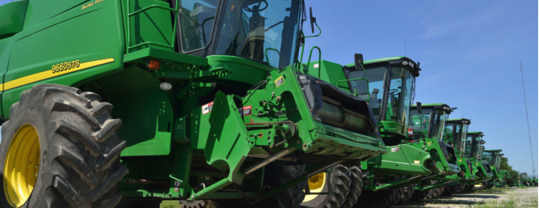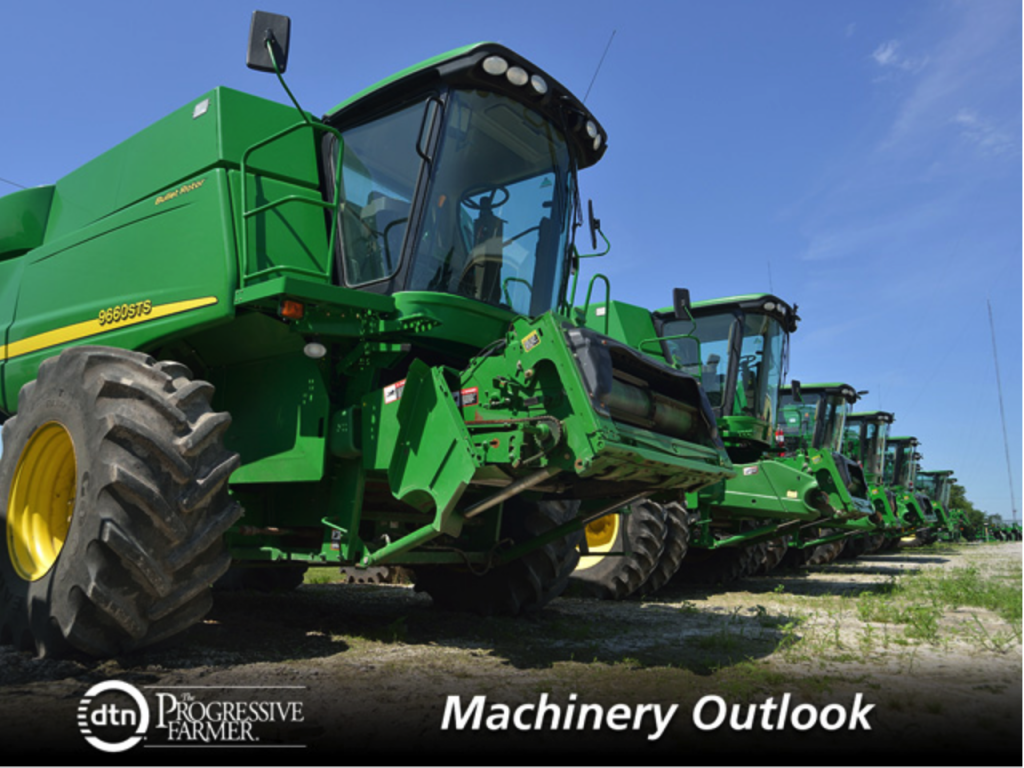The farm equipment industry won’t remember 2015 fondly. Sales of new equipment continued a two-year slide; used equipment began to pile up on dealer lots and production lines slowed, causing employee layoffs.
Looking ahead to 2016, the industry sees a largely unchanged ag business environment and can only hope the trend line will at least flatten and not continue downward.
Over the last couple of years, manufacturers have tried to help move used equipment by offering certified pre-owned programs. The idea was to provide a type of extended warranty that would entice customers to buy used equipment.
Congress tried to help, too. In December, it made Section 179 of the IRS code permanent. The intent is to give tax relief to business owners who purchase new equipment including farm machines.
Such programs may have helped move used machines, but dealer lots are still full. If you are a farmer in need of good used equipment, now might be the best time to buy in many years. If you want to sell, prepare to accept less than you want. If you are a dealer, the interest on all that inventory is eating your lunch.
Here’s a look at what 2016 might hold for used equipment inventories and dealers.
USED EQUIPMENT:
“Strategies for Marketing Used Equipment,” was the title of a recent webinar sponsored by Farm Equipment, a print and online magazine aimed at more than 14,000 dealer principals and managers. Presenters were Greg Peterson — known in the industry as Machinery Pete — and Rick Vacha, regional sales manager for Ritchie Bros. Auctioneers ag division based near St. Louis. His company has auction outlets in the U.S. and Canada. It sells both in person and online.
Peterson, who tracks farm auctions on a national level, began by explaining trends he has seen recently. First, he said, there has been a rising number of farm machinery auctions since last fall — 30 to 40% more than the previous year. He attributed that to farmers retiring, operators losing rental land, banks forcing borrowers’ hands and the high inventory of late-model equipment on dealers’ lots, which pushes up supply in a time of low demand.
“I think in 2016 will be more of the same,” Peterson said.
Prices of used equipment were fairly strong the last quarter of 2015, but slumped in December. This is despite the re-instatement of Section 179’s $500,000 deduction on equipment purchases. Peterson expected prices to “continue to drift downward” but “remain fairly steady.” Sprayers and planters, whose values took a beating last year, should hold their values this year, as should small tractors, Peterson said. Everything else is due for a slight value reduction.
Utility tractors and other equipment sized for hobby farmers have brought good prices at auction lately, Vacha said. He expected combine values to remain steady.
New equipment sales have not yet improved. A lack of cash flow for farmers is the obvious reason. Some dealers didn’t help new equipment sales when they refused to accept trade-ins to keep from expanding their used equipment inventories.
New equipment sales might have been taking a hit from another direction too. Manufacturers, anxious to keep factories active, have been more aggressive in offering lease programs for equipment. Leasing rather than buying is a rational decision for some farmers when cash flow is tight; lease payments are lower than loan payments. Also, if return on used equipment is low, it makes sense not to own but to lease instead. The problem is that a flood of lease contracts could lead to a further rise in used inventories when leases end and vehicles come back to dealers.
That’s one reason, Vacha said, “2106 will be very challenging for dealers.”
He is not concerned that used equipment prices will continue to fall. “I actually think equipment values will be steady to slightly lower.” But, he said, the spread between wholesale (auction) values and retail (dealer lot) values “will be the widest for a very long time.” He means that auction sale prices can be much less than the price tags on dealers’ lots. This, in turn, means that dealers will have a harder time getting their asking price from a local customer.
Still, Vacha urged dealers to keep price tags steady on their equipment inventories. Otherwise, both wholesale and retail prices will erode further.
“Sooner or later the used equipment market has to stabilize,” Vacha said. Neither he nor Peterson would confidently predict when the used pipeline would clear. “I do see improvement,” Peterson said. “Now I’d say [it will take] two years, or three optimistically [for used inventories to return to normal].”
Vacha sees much the same scenario. “I think this year will be a steady year for values, and I think you will see a slight decline in used inventories. The turnaround is probably two years out or so,” Vacha said.
DEALERS:
“I have not talked to anyone [dealer] who thinks 2016 will be a turnaround year,” Dave Kanicki told DTN/The Progressive Farmer. He is executive editor of Farm Equipment and Ag Equipment Intelligence magazines. “On the other hand, no one is threatening to jump off the roof either.”
A lot of farm equipment dealers who watched the market downturn approach planned ahead. They were able to modify business plans to give themselves some room to maneuver when revenues dropped. Still, the excess of used equipment on their lots has been overwhelming for some dealers. Now, some of them “have to give it away [equipment] in a lot of cases,” Kanicki said.
There have been some bright spots. Utility tractors and consumer products like lawn tractors have been selling briskly, which helps dealers’ cash flow. Surveys of his dealer/readers tell Kanicki that about 33% of 2015 total sales were to non-production farmers. The breakdown includes 14% of sales to small farm and rural lifestyle landowners. The rest were to contractors, municipalities and lawn and turf companies. All of those sectors have improved as the general economy has strengthened.
Even with a third of their customers in the buying mode, dealers are under pressure. Kanicki sees an acceleration of the long-term trend of farm equipment dealers consolidating or selling their businesses.
Age plays a factor in this. The average age of farm equipment dealers is about 57, Kanicki said, and “a lot of them have no clear succession plans.”
Manufacturers encourage the trend to consolidation. It helps increase overall efficiency of dealer networks and eliminates weaker dealers in a kind of survival of the fittest. Kanicki also attributed some of the consolidation to the emergence of interest among private equity firms, who view farm equipment dealerships as good investments.
To illustrate that consolidation of dealerships is happening, Kanicki pointed to a study his magazine conducted. It showed that last year, 20 dealer groups in North America owned 15 or more locations. Six years ago, only 12 dealer groups owned that many stores.
One dealer, who told Kanicki he is considering selling out, said: “I should have gotten out three years ago. But I was having so much fun … “
**
Editor’s Note:
Each year, DTN presents an outlook series on what is expected for the year ahead in various areas of agriculture. This is the 13th story in a series DTN is running that looks at what farmers can expect as the hot topics for 2016 in areas such as farm finance, land prices, ag and the environment, agricultural policy, crop inputs, livestock, transportation and others. We welcome your feedback on what you think the year will be like at talk@dtn.com.
Jim Patrico can be reached at jim.patrico@dtn.com


